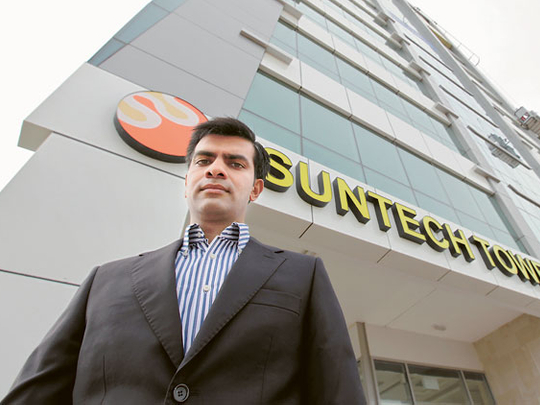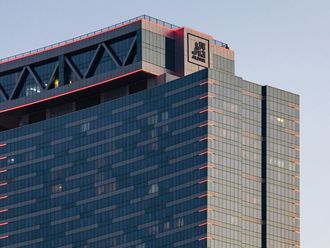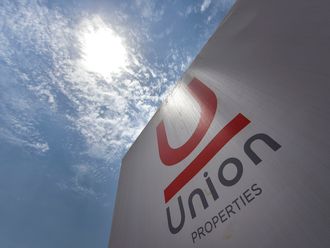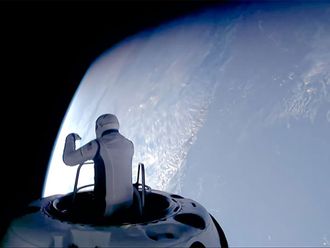
Dubai: As far as definitions go, Sailesh Irani would not have it any other way. As a developer, he does not lay claim to any of the adjectives that others in the industry have used to excess — and to their detriment — in the recent past.
"We are a small to mid-sized developer and with our first project the aim is to offer offices — for sale or on rental — to small or mid-sized businesses in Dubai," said Irani, director of Sun and Sand Developers, which has just completed its Suntech Tower project in Silicon Oasis.
Within the local real estate industry, such plain speaking is about as commonplace as showers in June. It stems from a conviction that saw the developer launch the project during the high noon of the real estate downturn in mid-2009.
Delays would have cost more
"Looking back, I feel we could not have chosen a better time to go ahead with the launch of construction; in fact delaying it would have cost me even more," said Irani on the Dh60 million Suntech Tower project.
"Moreover, by starting early and not going by the market circumstances at the time, we have given ourselves an extra six to nine months to market the project to our end-user base.
"This way, we expect to have full occupancy — or close to that — when the market picks up... and we are starting to see the first signs of that."
Completion certificate
The completion certificate has been granted for Suntech Tower. Having decided against pre-sales, and the fact is the market situation at the time would not have allowed it either, the developer is now all set on launching a targeted campaign to get the tenants and buyers for the office units.
"In difficult times, when you're devising a strategy you need to be quite specific, said Irani. "Small and mid-sized businesses make up a predominant share of the local economy and because of their very size, they tend to make decisions faster.
"We are hoping this would work in our favour during the marketing phase of our development.
"We are looking for companies that have a staff of 10 to 20 people and book Dh500,000 — Dh1.5 million in net profits annually. We thought if we can design a product for these companies we will see success."
As things stand now, the developer is looking to get 75 per cent occupancy in nine months and a full one in a year's time. "The way the payment is structured, a business paying slightly more than the rent can acquire the office unit over a five-year payment period," said Irani.
It remains to be seen whether the developer's timeline and projections can be met. Demand for new commercial space remains subdued and it is unlikely the circumstances would change in the short term. Also, the market is yet to fully absorb how to function optimally in a commercial development with multiple owners.
None of this fazes Irani. "People will take time to comprehend the ownership programme, and they may want to start off renting and then convert to an ownership format," he said.
"When end-users are occupying the offices, multiple ownership will not be an issue. It's only when investors rather than end-users — are involved that a problem may arise. But for Suntech Tower, the emphasis is going after the genuine end-user. Commercial leasing is never going to be as quick as residential, where the decision making involves a maximum of two people. But we are well prepared for it."
First trickle
The first trickle of lease agreements have started to materialise. It helps that Silicon Oasis has developed some build-up as a commercial and residential base in recent years. For businesses, the location comes with the advantage of offering a free zone status. While local enquiries dominate, some have come from businesses in India and even the UK. Units in Suntech Tower range from 720 to 1,750 square feet.
While keeping itself busy with the sales and leasing of Suntech Tower, the developer has plans for new ones as well. "From a purely developer perspective, it's vital to have the land bank and we do have that," said Irani.
There are ten plots spread across key locations in Dubai, including a second one in Silicon Oasis. And others close to the Al Maktoum International Airport.
"But it will be one project at a time as controlling the exposure will be a priority for us," said Irani.
Top Tips
- As a developer, a key priority would be to develop a land bank at the right price. Everything else flows from how well you have done that.
- On the development side, create in-house capacities to take on multiple roles within projects. This way we have control of the specifications.
- Get the completion part absolutely right.
Investment: smooth process
For the Suntech Tower, the developer tapped into own funds for the Dh60 million investment.
"It was a tough decision as there was no pre-sale and no bank finance," said Sailesh Irani. "Yet, post that decision the execution of construction was a smooth process."
Apart from a five-year deferred payment option for the offices, which allows a business to take possession by paying 30 per cent of the value, there is also an exit option.
Under this programme, if the owner has been a tenant for a year and a half and wants to exit from the sale transaction the only penalty will be a 7 per cent instalment, and the 30 per cent amount paid upfront will be returned.











